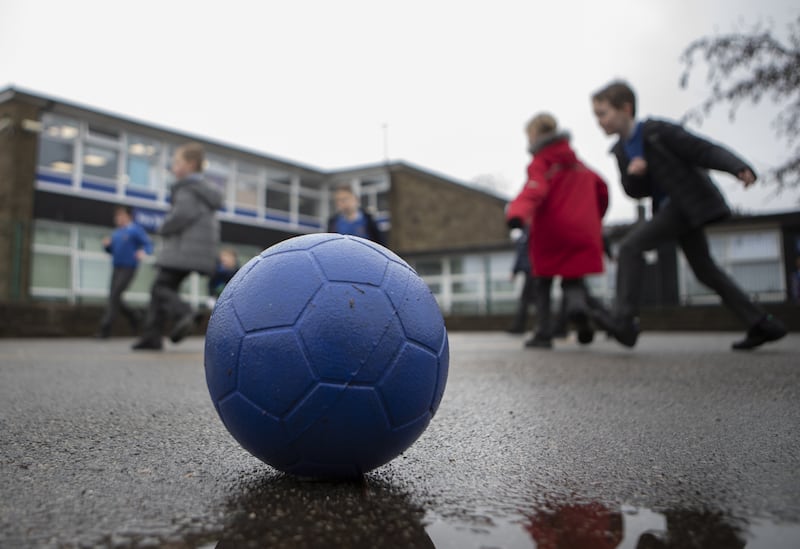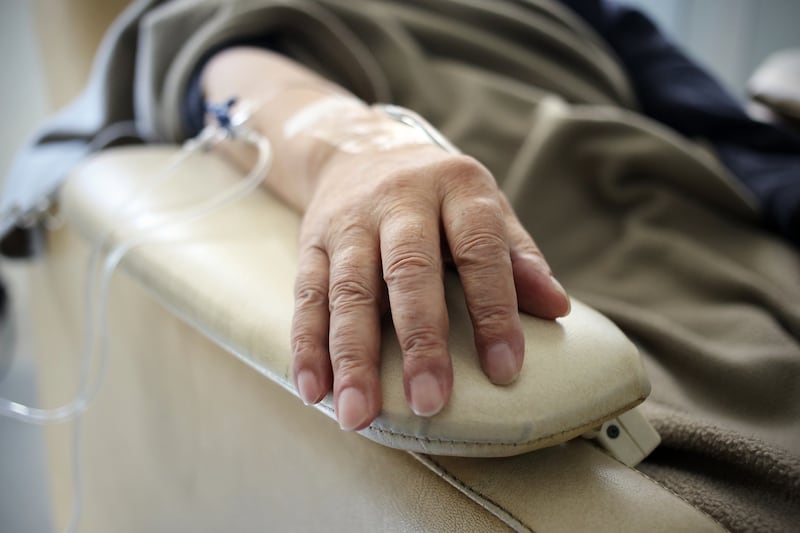1: Top of the heap
Irish people may protest otherwise, but Ireland regularly appears near the top of every positive metric when measured against other countries. After New Zealand and Canada, Ireland is perceived to be the third happiest country \and also the third most generous, according to the 2023 Anholt-Ipsos National Brands Index (NBI) It is perceived internationally to be the 18th best regarded country in the world as a nation brand. Given that the top 10 is dominated by the largest countries in the world, this is an achievement for a small country.
2: Quality of life
Ireland has the highest quality of life in Europe, according to the lifestyle magazine Dailybase which used 12 factors to determine including GDP, access to healthcare, cost of living and salary. Ireland was ahead of Norway (2nd) and Netherlands (3rd). Ireland has a divorce rate of just 0.6 per 1,000 people, far below the average of other countries. Ireland also scored high in areas like average literacy rate, life expectancy, and tertiary education. According to the more comprehensive United Nations Development Programme human development index (HDI), Ireland ranks an impressive eighth in the world. The HDI says Ireland’s high standard of living, strong focus on education and, yes believe it or not, a “well-developed” healthcare system makes the country one of the best in the world to live in.
3: Happiness barometer
Though it is possible to believe that everything is going to hell in a handcart, Irish people are, in reality, among the most content people in Europe. The Eurobarometer finds that 54 per cent of Irish people believe the country is going in the right direction. Only in Luxembourg (60 per cent) are residents more optimistic about things. Both countries are the only ones in the EU where a majority believe the country is going in the right direction. France may have the finest cuisine and wines in the world, a fabulous climate and a world-class transport network, but it has also got more malcontents than any other EU country with just 14 per cent of people believing the country is going in the right direction while 74 per cent say it is not. As the French adventurer Sylain Tesson put it, “France is heaven inhabited by people who think they live in hell”.

4: Child poverty
The number of children in Ireland living in poverty has dropped by almost 20 per cent in the last decade. The definition of poverty, according to a Unicef report published earlier this month, is the number of children living in households which have an income 60 per cent below the average. Ireland was one of the best performers in Europe in that time period which compares 2012-2014 to 2019-2021 partially because of the recovery of the economy following the collapse of the Celtic Tiger which plunged a lot of families into poverty. By comparison, the UK performed the worst of all 43 countries within the OECD with child poverty increasing by 35 per cent.
READ MORE
5 Life expectancy:
Life expectancy in Ireland has been transformed in the last 100 years and continues to improve. It is likely to surpass an average of 83 next year. It is 84.4 for women and 80.8 for men though that gap is closing. The difference between the life expectancy of women and men has decreased from 5.2 years in 2000 to 3.6 years in 2023. In this century alone the average life expectancy has increased by six years since 2000. Ireland has the highest self-perceived positive health status in the EU, with 82.1 per cent of people rating their health as good or very good. The number of people reporting a chronic illness or health problem is also better than the EU average, at approximately 29 per cent of the population. Deaths of despair refer to deaths from suicide, acute alcohol abuse or drug overdose are lower than the international average.
6: Education
Ireland has a far higher rate of third-level education than the EU averages, with women more likely to attain it than men. Women across all age groupings from 25 to 64 years had higher levels of third level attainment than men. Overall 80 per cent of Irish second-level students proceed to third level. The number of students from disadvantaged areas attending third level is increasing again. The proportion of Deis school leavers who progress to third level climbed from 57 per cent in 2019 to a record high of 63-64 per cent during 2020 and 2021, before dropping back to 60 per cent last year when normal exams resumed. This year’s college participation rates among school-leavers from Deis schools have bounced back to 63 per cent.

7: Cancer survival rates
The number of Irish people who are living after cancer has grown by more than half over the past decade as survival rates continue to improve. One in every 24 people in the population has survived cancer as the number of survivors passed the 200,000 mark for the first time, according to the latest annual statistical report from the National Cancer Registry. Almost half of the 207,000 survivors have experienced breast or prostate cancer. For invasive cancers, the five-year survival rate for patients diagnosed between 2014 and 2018 averaged 65 per cent; this compares with only 48 per cent for patients diagnosed in 1994-1998. The biggest improvement is for multiple myeloma, up 37 percentage points, followed by prostate cancer with a 28 percentage-point improvement.
8: Personal safety
Though there were some high-profile violent incidents in the State, in reality Ireland is perceived to be a safe country. This may be a factor in its attractiveness to migrants. The State is the third safest country in the world for expats, according to research by insurer William Russell. Specialising in international insurance policies for expats, the company has found that Ireland outperforms other countries in many areas, including jobs, health, safety and life satisfaction. The research examined metrics such as personal safety, public health and digital security to evaluate the safest countries for expats to live and work in, with reference to the Global Peace Index 2023. The insurer found the Republic ranks in third place in terms of safety, behind Iceland at number one and Denmark in second place. The research said that most people visiting Ireland “have no issues when it comes to crime”, apart from being advised to take precautions when it comes to potential bag snatching and pick pockets which can “occasionally occur, particularly in the Dublin area”.
9: Barn Owl
The final report of the Citizens’ Assembly on Biodiversity Loss published earlier this year made for grim reading with so much species loss in Ireland. There are grounds for optimism for some species though. The barn owl is making a comeback having been almost wiped out due to habitat changes since the 1970s. But things are looking up, and in the past decade, there’s been a 500 per cent increase in breeding pairs in west Offaly and east Galway as they move northwards and eastward from their traditional strongholds of Cork and Kerry. Numbers are also up in midland counties such as Westmeath, where their breeding range has increased by 128 per cent in the same period. This season has been the most successful in 15 years. There are now more than 300 artificial nest boxes across Ireland for these beautiful birds.
10: Dublin Zoo
Dublin Zoo has had another successful year most notably with its newest species, the remarkable Aye-Ayes who have distinctive glow-in-the-dark eyes and long middle finger. The Aye-Ayes are a large nocturnal primate and a critically endangered species. They only exist on the island of Madagascar. The zoo built a special nocturnal house for them this year and it has attracted a huge number of visitors. The house reverses day and night so it mimic nights during the days and then turn the lights on at night. The Aye-Ayes, Peanut and Tahiri and their offspring have proved to be a huge attraction and have successfully adapted to their own home.
11: Literature
One hundred years after WB Yeats won Ireland’s first Nobel Prize for Literature, Ireland continues to punch above its weight in the books world. Four of the 13 novelist longlisted for the Booker Prize for Literature this year were Irish and two were shortlisted, Paul Lynch for his book Prophet Song and Paul Murray for The Bee Sting. Paul Lynch eventually won. To put that in context, Ireland represents 1 per cent of the English-speaking population of the world that is eligible to enter the competition. The Irish ecosystem of financial support for writers and festival circuit is the envy of many bigger countries. Perhaps the most remarkable success of the year is that of Katriona O’Sullivan’s memoir Poor about her life growing up in poverty with addicted parents. It has not been out of the top 10 since its release in May.

12: Music
2023 will forever be remembered in Ireland as the three when three giants of the Irish music scene died - Sinead O’Connor, Christy Dignam and Shane MacGowan. All three are irreplaceable icons whose music will continue to outlive them. A new generation of artists have emerged. It was a great year for CMAT (Ciara Mary-Alice Thompson) whose irreverent brand of pop is a perfect antidote for these troubled times and for Lankum who won best album of the year in countless polls. Jazzy has had the Irish song of the year with more than 100 million plays on Spotify alone of her earworm Giving Me.
- Sign up for push alerts and have the best news, analysis and comment delivered directly to your phone
- Find The Irish Times on WhatsApp and stay up to date
- Our In The News podcast is now published daily – Find the latest episode he












